Jorge, (Lapacho) on Woodnet recently posted his rabbet plane design. I was intrigued with the concept, so I made one. I modified it a bit, but then, I do that.
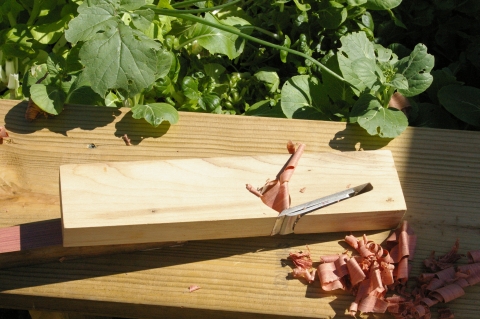
It makes nice shavings!
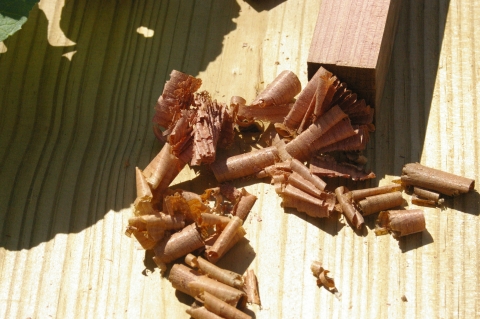
It leaves a smooth finish behind!
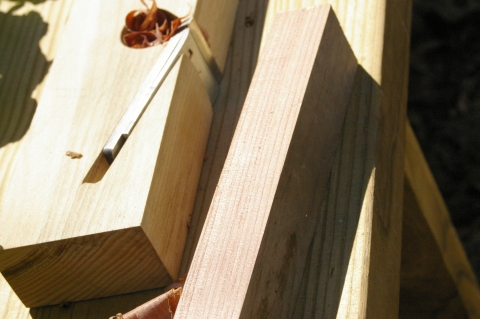
I tested it here on a splitting chunk of cedar, not the worst wood but not the best either.

It left a smooth surface.
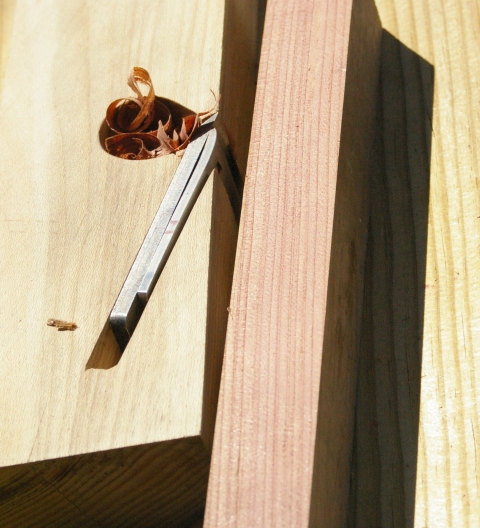
Note the crack in the end of the plane. This is not the best wood for the job. Too soft, and flawed. Still it was handy, the right size and easy to work. Good for an experiment, Now that I know it works, I need to make a qood one,

The bottom ‘bed’ does not even touch the upside down chip breaker. It is just a guide really.
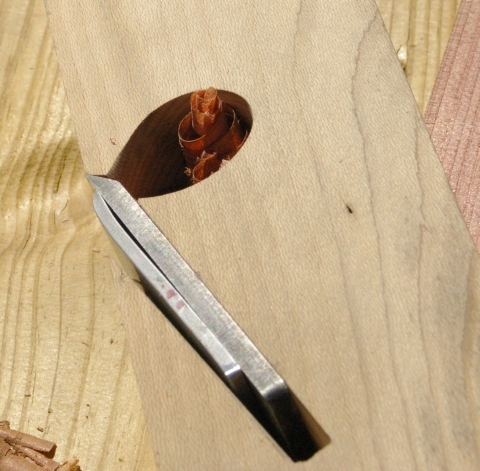
Nice little curls, easy enough to clean out.
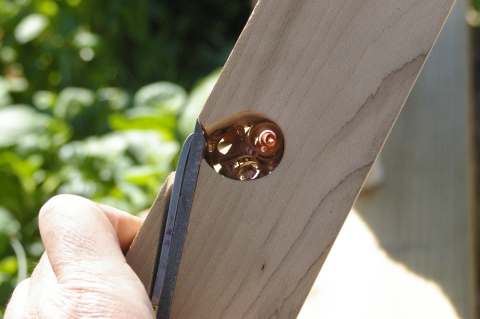
I tested shavings. At .002 inches thick, I could easily make a full width shaving. At .0015 inches, it would usually be a full width shaving. At .001 it was a bit sporadic.
The thinnest shavings were just a hair below .oo1 inches, but with this dry cedar, they were not very substantial and turned to dust easily.
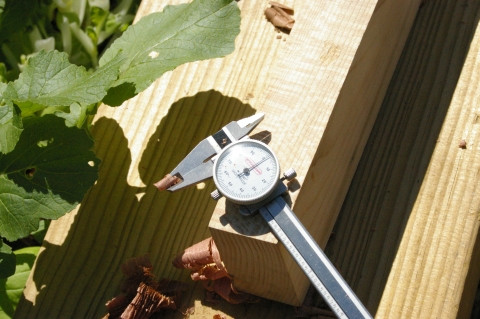
This mechanism allowed a rabbet plane to be stable and
to make a smooth clean surface.
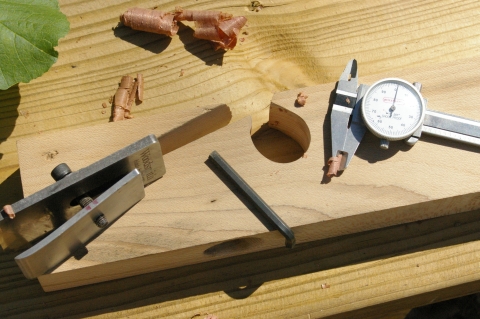
The iron and the chipbreaker are made by Hock and came from a Woodsmith plane kit.
When I remake it, it will have a slightly steeper angle an adjustable mouth, and be from a much harder wood.
This pretty much proves that Jorge’s concept is quite solid. Rabbets are typically pretty unstable and tricky. This one is a quick rig, and it works flawlessly.
Bob










 A page Dedicated to My Writing
A page Dedicated to My Writing
Recent Comments